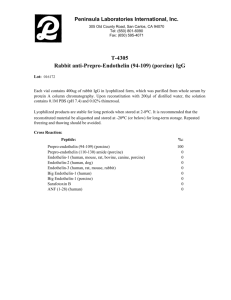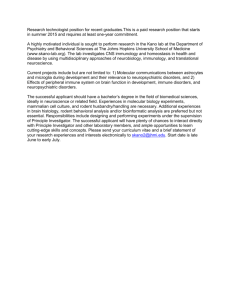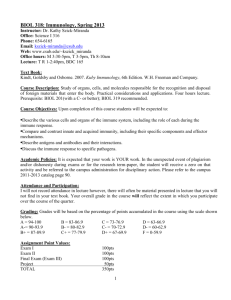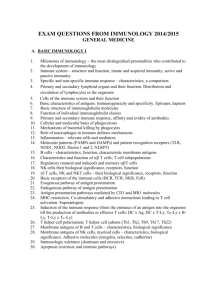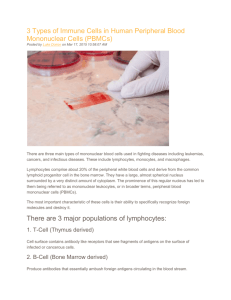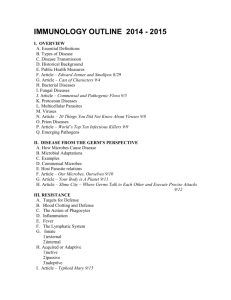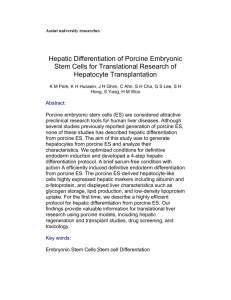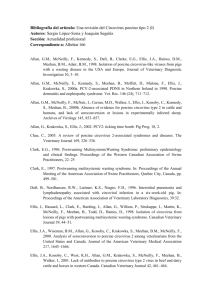the challenges for immunology
advertisement
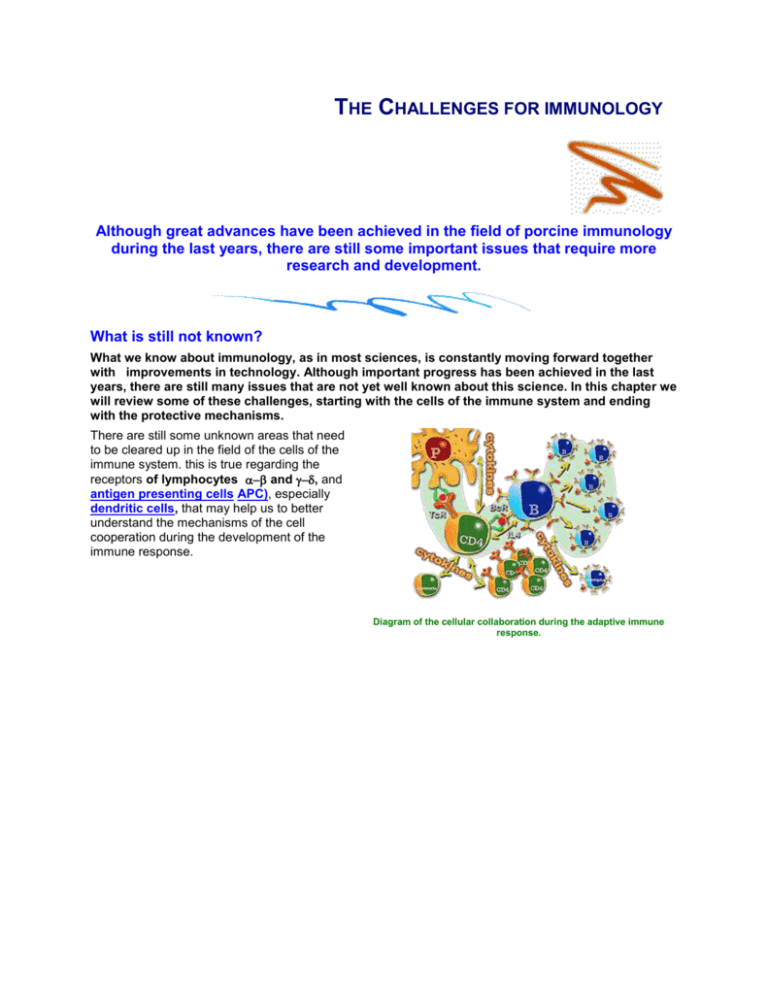
THE CHALLENGES FOR IMMUNOLOGY Although great advances have been achieved in the field of porcine immunology during the last years, there are still some important issues that require more research and development. What is still not known? What we know about immunology, as in most sciences, is constantly moving forward together with improvements in technology. Although important progress has been achieved in the last years, there are still many issues that are not yet well known about this science. In this chapter we will review some of these challenges, starting with the cells of the immune system and ending with the protective mechanisms. There are still some unknown areas that need to be cleared up in the field of the cells of the immune system. this is true regarding the receptors of lymphocytes and , and antigen presenting cells APC), especially dendritic cells, that may help us to better understand the mechanisms of the cell cooperation during the development of the immune response. Diagram of the cellular collaboration during the adaptive immune response. Another challenge for porcine immunology is the better understanding of the mechanisms involved in the immunity of the mucosa, regarding to the infection routes and the transportation of antigens that allow an enhanced immune response. Regarding the porcine immunoglobulins; a better knowledge of the immunoglobulin IgE is necessary. Up til now it has only been identified in an indirect way. Also, the existence of porcine IgD needs to be confirmed, and the available information about the protective role of immunoglobulin IgA must be enlarged. Porcine immunology needs a better understanding of cytokines; only 19 porcine cytokines have been cloned. One of the aspects requiring more research is their role in the innate and adaptive immune response, in the hematopoiesis and in lymphocyte activation. ANTIGEN PRESENTATION IN THE INDUCING AREA OF THE MUCOSA. Antigens entering the gut epithelial cell are readily destroyed by the lysosomes. However, those antigens that are captured by the M cells are transported, without being destroyed, and later presented to the intra-epithelial lymphocytes. Then, they are transported to the lymphatic nodes. Cytokines play a mayor role in the innate immune response due to the mechanisms of direct action against the infectious agent (they prevent the infection of the cells by the viruses) or by mechanisms of cell activation (NK and macrophages) which at the same time induces the release of more cytokines. One of the functions of cytokines is the attraction of the different cells of the immune system. Finally, there is a need to improve what we know about the immune mechanisms that work against infectious and parasitic agents. Parasites, due to their complex antigenic structure and their different life cycles, use different strategies to evade the immune response by using intracellular infections or antigenic variations that are not yet well understood. Parasite immunology is one of the pending subjects. In addition, more effective vaccines against bacterial and viral agents must be achieved, which means more research should be performed in this area. DNA vaccines will in the near future, represent an excellent option. Diagram showing the different types of new generation vaccines. Which way will immunological studies go? The development of new technologies will allow a better understanding of the subjects mentioned above. The development of genetic engineering, that allow the cloning and expression of different genes (thus knowing the role of the proteins that they codify), as well as new transgenic experimental animals, either knock-out animals (which have some of their genes suppressed and thus do not express certain proteins) or animals in which a new gene has been incorporated, are some of the new technologies now available that will help to better understand the immune response. We must not forget the essential role that monoclonal antibodies play in the study of populations and subpopulations of lymphocytes and in the study of epitopes from different antigens. Also, syngenetic animals are important when studying the histocompatibility system. Thanks to all these new techniques the advances in the knowledge of porcine immunology will keep moving forward. Diagram showing the production of monocolonal antibodies. Which will be the future role of pigs? Nowawdays, porcine production is one of the main sources of material for the meat industry in the European Union, and is an important part of the total agricultural production. This production will be increased in the future thanks, among other factors, to increased production in Spain. All this makes the pig a strategic animal in future economic development; therefore research on this species is of vital importance. Moreover, pigs are not only considered as a source of protein, but also as a source of organs for transplants in the humans species. Xenografts (grafts between xenogeneic members of different species) are an alternative due to low numbers of available human organs for transplants. Donations are insufficient even in Spain, which has one of the highest organ donation rates in the world. Among the different animal species considered as possible donors (primates, baboons), pigs have some important advantages. Some of these advantages are: they breed easily, their size is compatible to human size, There is a smaller risk of crossinfections (excepting endogen porcine retroviruses; the sanitary consequences are now being studied) and the possibility exists of producing poly-transgenic pigs that express different genes in order to avoid the acute rejection of the vascular rejection, which are nowadays the main problems of xenografts. There already are transgenic pigs regarding DAF (Decay Accelerating Factor). DAF inhibits the production of cobertasas of C3 and C5, avoiding the activation of the complement by both pathways during the hyperacute rejection. Electronic microscopy image of retrovirus. From what has been explained above, we can suggest that research on pigs will be, during the following years, one important issue in the scientific strategy in most developed countries. It seems that transgenic pigs and especially poly-transgenic ones seem to be the candidate donors of xenografts for the human species. Picture of a baboon. This species was considered as the main candidate for xenografts in humans.



